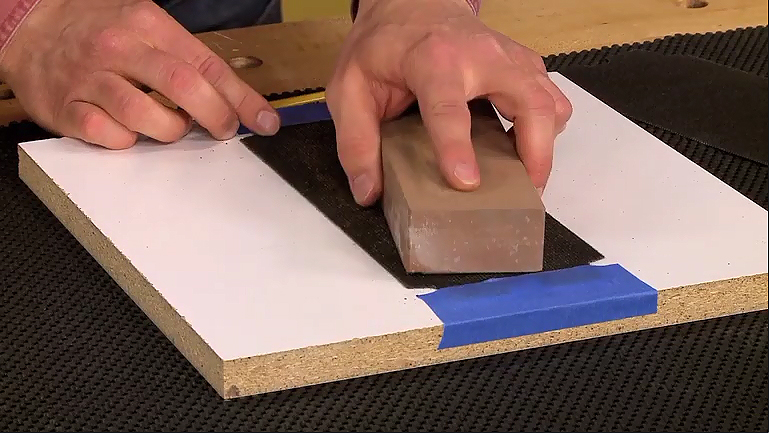Recently faced with the challenge of cutting a lot of hinge mortises, I was looking for a quick way to get the job done. So I turned to my router to cut flat-bottomed mortises. That doesn’t mean you need a complicated jig or setup to rout hinge mortises. In fact, for the technique you see here, all it takes is a simple, two-part jig and an inexpensive router bit. The bit I use for mortising is a short, top-bearing, pattern bit.

I didn’t want the jig to be locked in to a specific size hinge. So I designed the jig as a pair of overlapping guides. This allows the guides to straddle the door and slide together (or apart) to match the length of the hinge exactly. Each guide consists of two parts: a fence and a top. The fence registers the guide on the face of the door. And it provides a place to clamp the guides in place. Together, the tops form a large, stable platform to support the router as you cut the mortise. The inside edge of each top also serves as the guide edge for the bearing on the bit. I also attached a simple back stop to one of the guides. With this, you can rout a mortise that exactly matches the width of the hinge leaf. A pair of screws and washers in the back stop are set in oversized holes. This allows you to fine tune the mortise width.

Before getting into the actual routing, I’d like to talk about the overall process of mounting the hinges. To save some time and effort, I cut the mortises in just the door — rather than the door and case. When routing the mortises this way, you’ll cut them to match half the thickness of the hinge barrel. The first step in the process of making the hinge mortise is to mark the location of one end of the hinge mortise. Now, clamp one part of the jig so the inside edge is right on this line. (I clamp the “tail” end first so the clamp won’t interfere with the other half of the jig.)

To set the length of the mortise, I use the hinge as a gauge to position the other part of the jig. The only other setup step to take care of is positioning the back stop. Here, I use a combination square to make sure the stop is parallel to the edge of the door.

For most mortises, removing the waste only takes two passes. The first pass defines the perimeter of the mortise. It’s routed from left to right in a U-shape. The second pass clears away the rest of the waste. After the routing is complete, all that’s left is a little handwork. But don’t remove the jig just yet. You can use it as a guide to clean up the corners with a chisel. This way, you can be sure the corners are square with the rest of the mortise. All in all, the whole process only takes a few minutes. And the result is a mortise that perfectly matches the hinge.











